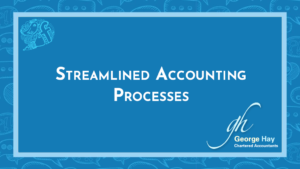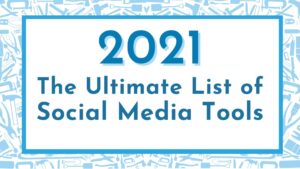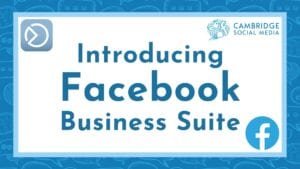In 1605 a terrorist plot was discovered in London. The ring leader was Robert Catesby. The target was King James I and the state opening of Parliament. Guy Fawkes was found guarding 36 barrels of gunpowder in the cellars beneath parliament. There was enough to blow the Houses of Parliament sky high.
On November 5, I wrapped my children up warmly and walked them down into town. We stood and watched the fireworks. It was a magical moment as my children’s faces lit up as they saw the beautiful colours explode in the night sky.

413 years on we are not only telling the story of what we now call Bonfire Night but we are acting on it too.
We all know the rhyme:
Remember, remember the 5th of November
Gunpowder, treason and plot.
I see no reason why gunpowder treason should ever be forgot.
And we haven’t forgotten it. It makes us act, come together and take part in this ritual every year. And we’ve added our own stories to it as well. There are stories of when dad couldn’t light the bonfire or of eating badly cooked sausages. We make the story our own.
It’s a time of year when fireworks manufacturers don’t need to worry about sales. The story does it for them.

I’ve been telling stories all my life. I was a newspaper journalist for many years. You might be wondering what stories have to do with business. Stories are an integral part of our businesses. We all have stories about why we created them, how we help our customers, how we came up with product ideas and designs.
This article is going to be looking at some campaigns people have run to give you some inspiration for your own stories. Think about how these stories are shared with other people and the point where your stories and your customers stories overlap.

Stories are all around us
From the moment we are born we are told stories: about who we are, our place in the world, how things work, what to do when. Stories will have influenced you several times already today. What you ate for breakfast. What you’re going to spend the day doing. And you will tell stories to friends, family, colleagues, customers about things which have happened to you or that you’ve done this week.

Stories are powerful
Our world is built on them. The United Kingdom’s institutions have risen through stories of conflict, battles won and lost, friendships, alliances, and the odd moment of plain luck.
When she was growing up Victoria never expected to be queen. Her influence still dominates this country and her legacy can be seen everywhere. We still talk of Victorian values. There are Victorian railings on our streets. When I stood to watch the fireworks with my children I was standing on Victoria Avenue.
The story of Bonfire night is 400 years old. We still tell of David and Goliath battles and the Good Samaritan. Both from the Bible. And we talk about the Trojan Horse, a daring gambit that happened 1000 years before Christ.
Stories live on, long after they were first told
Stories shape our identity. Our home town, who our parents were, who their parents were, school, our football club, our university, if we went to university: all of these create stories.

Stories can be represented by images. The Union Flag represents the united crowns of England, Scotland and Ireland. We’re back to King James I again! It brings together national stories, an end to many of those battles we just talked about. But some nations are not visually represented on the flag: Wales and Cornwall. And we know from conversations about devolution that not everyone identifies with a United Kingdom.
The Union Flag tells stories of invasions we have withstood. Rule Britannia. It represents our armed forces, our sports teams, Eurovision and the Royal Family. Your reaction to reading that list, the things you identify with, is likely to be different to another reader’s reaction.
It also tells a business story. Britain is a brand. Made In Britain is a mark of quality. A badge known around the world. When you see that flag on a product you know you can trust it. It tells a story.

Stories tell us who has power
And who does not. Whose word counts. Who has knowledge. What types of knowledge we value. Stories tell us who to trust. Who to believe. Who is credible.
They tell us how to respond to people and events.
We’re bombarded with stories all the time. Not just the news, but social media, what our friends tell us, what we see when we’re out and about. We tell stories to each other. And we tell them to ourselves.

Stories on social media
On Instagram or Facebook we’re constantly comparing our every day lives with the occasional excitement of other people’s. We post when we have something we think is worth sharing. Not when we’ve come downstairs to face the washing up we couldn’t face last night and the toddler has decided to empty every cupboard onto the floor.
We tell stories without thinking about them. If we see a red traffic light we stop. We know it means danger. There could be a car coming or a train. But if we see red shoes we might think they are exciting.
- Blue can make us feel calmer. It’s associated with communication and trust. Twitter, Facebook, Skype and LinkedIn all use blue in their logos.
- Green means go! It also makes us think of growth, renewal and the natural world.
- Yellow. Bright sunshine. Happiness.
Colours can make spaces feel open or enclosed. We use them to describe how people feel.
We all have our favourite colours. That’s a story too.
Our brains process a ridiculous amount of information all the time. All these different stories, are used to sort and categorise information.
Some of that is very basic: How do we feel? Hot, cold? Are we in danger? While we consciously think about something we have heard, read or seen, our brain is using stories to work on all the other information we’re getting.
So what is a story?
A story has three main parts: people, the characters, drama, and some kind of ending.

But that doesn’t quite make a story. If I told you that a little girl went to visit her grandma one day it doesn’t very interesting. You wouldn’t think it was much of a story.
Stories need something else. They have an intangible quality. They create an emotional connection. They are relatable. And they reveal truths. They don’t have to be true but they do tell us truths. We use them as metaphors.

So let’s return to our story of the little girl. Her grandmother is sick and her mum has given her a basket of food to take with her. Stick to the path, her mother says. Don’t stray. Go straight there. The little girl puts on her red hooded cape, picks up the basket and sets off to the woods. They feel eerie. There are strange noises all around her. But she’s a curious child. She stops to pick some flowers in a clearing. Then to watch an interesting beetle. Then she meets a wolf. He persuades her to take a rest. She’s been walking a long while after all. She should stop and maybe have a snack. Her grandmother won’t miss one morsel after all…
We all know the rest of the story, although it might have different endings. There are many different versions of that tale. And there are stories about what the story means. Some people think it goes back to Norse mythology. Some see it as good and evil or light and dark. Some tell it as a coming of age story. The girl is transformed into a woman by her experience.
Did you find yourself filling in details while you read the story of Little Red Riding Hood? Perhaps you imagined the woods. And you feared for the dangers that lurk within. You may well have done that before I told the full story. Our mind fills in the blanks.
Stories on TV
This advert caught my eye. You may well have seen it on social media or tv. Watch it and think about how it uses the different elements of what makes a story. In particular think about how it makes you feel.
You can see how they used characters. The pace of change as the girl grows up. And it shows familiar situations for all of us at some time. We all have memories of sitting an exam. It’s relatable and provokes an emotional reaction.
One of the interesting things about this film is that the hero is not the focus of the story. All the action focuses on the girl as she grows up but she is not the hero. The heroes are the teachers and they don’t appear until the end.
You can play around with the elements of stories.

Our stories are shared but also different. Anyone watching the teaching video will see the same story, of course. But the stories which play in our heads while we are watching are likely to be different.
Watching that advert may have conjured up all sorts of stories for you. Possibly memories about friends, lessons, perhaps a favourite teacher.
Thinking back to the discussion of colours above, they have different meanings in different cultures. Red for instance is considered lucky in China.
Do you like marmite?
Love it or hate it we all know what marmite is. We have a story about it. Marmite uses this story to market itself.

What do you see when you look at the picture above? We all see a car. A mode of transport. But the stories we tell about that car or about that brand will be different.
The story Ferrari would like you to tell yourself is that you want it. That you should aspire to earn enough money to have one of these. And possibly a yacht moored in Monaco and a fridge full of champagne.
That story might not work for you. You might see excess. You might see a depreciating asset. You might find the idea of looking after a car like that stressful – what if it got scratched? Or you crashed it? You might not drive or have no interest in cars. You might be concerned about the environmental impact of it. If any of these apply to you, then you are not Ferrari’s customer. Ferrari’s customer sees owning one as part of their lifestyle.
Our stories are different because we have different world views. From simple differences like I say potato you say potato to how we feel about money and what our ideal home looks like. Our worldview affects the jobs we do, the things we buy, the way we vote, if we vote, where we go on holiday.

Picture your ideal customer. Think about all the different things which influence their world view.
What do they think or feel? Are they excited? Are they scared? Are they bored? Are they dreaming of a different life? Do they feel confident?
What do they see? This could be material things. Do they see everyone has the latest gadget? Do they see people around them getting jobs or promotions? Or do they see problems. It could be something in the kitchen which doesn’t work. It could be that they’re concerned by how much plastic packaging they throw away from the weekly shop.
What do they hear? What’s happening in their bubble? Are they hearing lots of chatter about a particular product, event or influencer.
And what do they say and what do they do? Is it what you would expect? Why do they do that?
Keep asking “why?” They feel awkward. Why do they feel that? Because everyone else in the room seems to know each other. Why do they think that? Because they can see them having conversations and they can hear the noise in the room. What do they do? They shrink away in a corner or go into the kitchen.
You’ll always find me in the kitchen. I struggle to talk to large groups of people and it’s often quieter. I find it hard to focus on a conversation with lots of noise going on around me.
Can you put yourself in someone else’s shoes? What does the world look like from their perspective?
A few months ago I was challenged to argue against something I believe in. I’ve been vegetarian since I was 14 so I took the point of view of someone who doesn’t believe in not eating meat. In fact they view it as essential that people do eat meat.
It was a very interesting thing to do. They made judgements about the vegetarian’s appearance. About newspaper articles they had read about vitamin deficiencies. They had a farming background. They knew about the huge range of jobs which rely on meat production. What would happen to them if everyone turned veggie? They talked about the rural economy.
And they asked what would happen to domesticated animals if we stopped eating them.
Food for thought. Not enough for me to eat a bacon sandwich but it showed why my life choices could be upsetting to someone else and threaten their way of life.

Golden Ticket Experience
Talking to your customers and thinking about the issues that affect them helps you to see their stories and how you form part of them. One organisation which does this is Loughborough University. I heard a talk from Emma Leech, their director of marketing at the MarketEd.Live conference a few weeks ago. She explained how they recently ran a very successful campaign where they sent a Golden Ticket to every student who won a place.
Why did they do it? Well they ask their students a lot of questions to understand who their customers are and while they were excited about leaving home and going off to university, they had one overwhelming concern: will I fit in?
Here’s what happened when they sent out the golden tickets:
The students went on social media and shared pictures of themselves holding their golden ticket. By understanding their customers’ world view, Loughborough were able to send a message which really resonated with their audience. You’re on the team. You’re one of us now. Welcome to the #Lborofamily.
It got them lots of news coverage and generated additional income of £4.6 million. They also saw an increase in applications the following year. You can read more about the campaign in this interview Emma did with Net Natives.
They made the campaign personal. They focused on emotion. They made it sharable. And they dared to be different. They stood out.

Stories inspire innovation.
They give us ideas.
They help us to see things in a new light.

When Steve Jobs was shown the mouse, it wasn’t called a mouse at the time, he got excited.
It was 1979. If you wanted a computer to do something you had to type in instructions. Steve was shown the mouse and how it clicked on icons on the computer screen. He saw a vision of the future. A world in which people didn’t need to know code to use a computer. In which tasks could be done quickly and easily.
Everyone had to write DOS prompts at the time. The mouse was a way to make computing far more accessible. It’s all part of the idea that Apple looks after the tech so you don’t have to. Using a product becomes intuitive. Steve Jobs told a different story. That story is the one we are all familiar with now.

What matters to your customer?
What stories do they want to tell?
Dresscode shirts create designs inspired by tech. It’s a new company based in Cambridge and their ideal customers are people who love tech, love coding. DressCode shirts allow people to literally wear their passion on their sleeves.

This is the signature shirt. They have one with a cursor pattern on it, another one with binary code. Coding isn’t something people usually get to shout about. Dresscode makes it a visible part of their customers’ lives. They have stitched themselves into their customers’ story.
What stories do people tell about your business? Jay Baer, of Convince and Convert, tells the story of Skip’s Kitchen in his new book Talk Triggers, written with Jack Lemin. Skip’s Kitchen is a burger bar in Sacremento, California. You walk in, go up to the counter, put your order in and sit down. Except there’s a twist. When you place your order, they take out a deck of cards. If you pick the joker, your meal is free.

People are delighted when they get the joker. They tell everybody! The story is so strong that locally the business is known as That Joker Restaurant.
When he was on the campaign trail, Barack Obama had a call to action. He would say: “Fired up!” and the crowd would chant “Fired up!”. Then he would say: “Ready to go!” And the crowd replies “Ready to go!” Obama didn’t come up with this catch phrase, he borrowed it from someone else. Here’s how it happened.
Fired Up from Dan Fipphen on Vimeo.
Are you fired up? Are you ready to go and tell stories? Then download my free ebook Telling Stories: a workbook. It covers how to get to know your customer, types of stories you can tell and how to make them relatable and shareable. It’s a step-by-step guide with spaces for you to fill in your own ideas.
Rachel Extance helps businesses tell their stories. To find out more, go to extance.co.uk.




